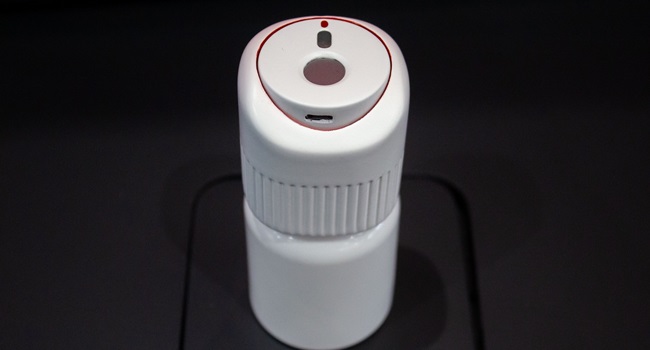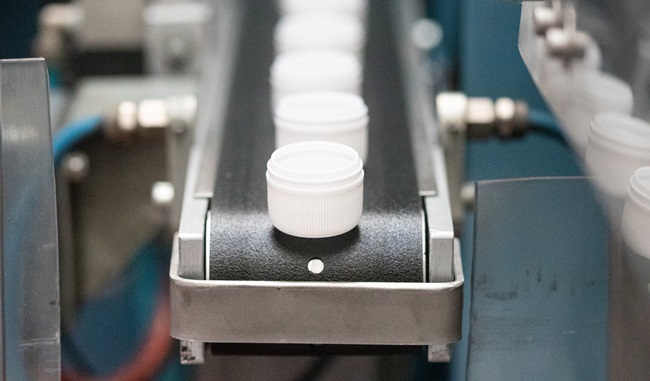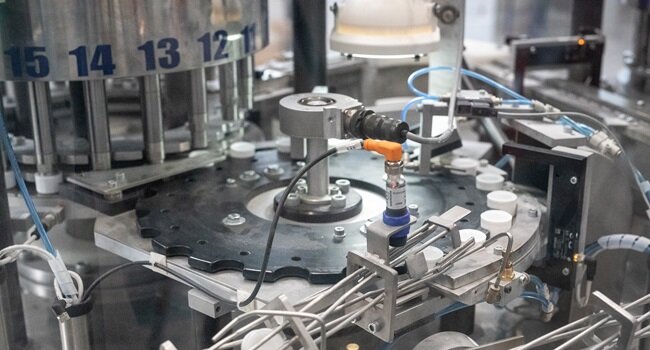Within the highly regulated pharmaceutical industry, patient safety stands as an unwavering principle. Packaging design, in this context, assumes a critical role in safeguarding the well-being of individuals. Child-resistant closures, in particular, serve as a cornerstone in preventing accidental poisoning, a significant health concern that demands ongoing vigilance.
Child-resistant packaging is meticulously engineered to minimize the risk of children ingesting potentially harmful substances. This includes a wide range of products, from prescription and over-the-counter medications to pesticides and household chemicals, all of which pose a threat to young, curious minds.
Despite significant advancements in packaging design, the implementation of stringent regulations, and increased public awareness campaigns, accidental poisoning among children remains a persistent health concern. A report by the U.S. Consumer Product Safety Commission serves as a stark reminder of the need for continued innovation, education, and unwavering vigilance in the realm of child-resistant packaging.
Navigating the regulatory landscape: a global perspective
Regulations governing child-resistant packaging exhibit variations across different regions globally. In the United States, the landmark Poison Prevention Packaging Act of 1970 established specific requirements for the packaging of a vast array of household and pharmaceutical products. This legislation marked a significant step towards enhancing child safety and continues to shape packaging standards today.
Across the Atlantic, in Europe, UNI regulations provide a comprehensive framework for manufacturers to ensure the safety and efficacy of child-resistant mechanisms. These regulations include ISO 13127:2012, UNI EN ISO 8317:2016, UNI EN 14375:2016, and UNI CEN/TR 16353:2013. Adherence to these standards is paramount in safeguarding children from accidental poisoning.
Balancing safety and accessibility: a delicate equilibrium
Child-resistant packaging must present a formidable barrier to children’s attempts at opening, while simultaneously ensuring ease of access for adults, particularly the elderly. Different types of closures exist, each tailored to specific packaging materials. However, a common thread is the incorporation of durable elements designed to withstand the persistent efforts of young children. It is essential to emphasize that these closures must also preserve the primary function of packaging: protecting medication from external factors like moisture, oxygen, and light, ensuring the integrity and efficacy of the product.
While not aiming for complete impenetrability, child-resistant packaging focuses on significantly extending the time it takes for a child to open the container. These solutions are meticulously designed and rigorously tested to deter accidental opening by children, thereby minimizing the risk of poisoning incidents. Child-resistant packaging represents an integral part of the pharmaceutical industry’s unwavering commitment to patient safety, particularly the safety of children who may unknowingly consume potentially harmful substances.

Expanding the scope of child-resistant packaging: beyond primary packaging
Historically, the concept of child-resistant features has primarily been applied to primary packaging closure systems, such as bottle caps. The most prevalent systems on the market include “Turn and Lift,” “Push and Turn,” and “Squeeze and Turn” mechanisms. These designs necessitate a sequence of movements that are difficult for a young child to perform, effectively preventing accidental opening.
However, the evolving needs of the pharmaceutical industry, coupled with increasing awareness about child safety, have catalyzed the emergence of child-resistant solutions for blister packs and other types of secondary packaging. This expansion reflects the industry’s comprehensive approach to safety, extending its protective reach across all forms of pharmaceutical packaging.
How to design to match safety and user needs
Designing child-resistant capsules demands a nuanced understanding of patient needs, industry requirements, and the regulatory landscape. Bormioli Pharma, a pioneer in this field, was among the first players to introduce child-resistant capsules in the market. The company continues to evolve its offerings to meet the dynamic needs of patients and the industry, demonstrating an unwavering commitment to safety and innovation.
Industrial needs are also factored into the design process to ensure seamless integration into pharmaceutical production lines. Pharma companies require robust products suitable for repeatable industrial processes. To meet this demand, 100% of production undergoes automated vision system checks, confirming improved capping performance and minimizing the potential for in-line failures.
While child safety is a paramount concern, studies have highlighted how child-resistant closures can inadvertently become a barrier for elderly patients or those suffering from certain disabilities. Therefore, a significant challenge for the future of child-resistant capsules lies in finding alternative methods that ensure the safety of the youngest without creating barriers for the elderly or disabled. This delicate balance is crucial to achieving comprehensive protection.

Exploring new frontiers with innovation and collaboration
Bormioli Pharma recently held a Co-Innovation Lab in collaboration with major Italian pharmaceutical companies and patients. The main objective of the workshop was to gain a clearer understanding of emerging and latent needs of people when using pharmaceutical products and to identify potential solutions to overcome existing challenges.
One potential solution that emerged from these discussions involves replacing the sequence of physical gestures needed to open the capsule with another opening mechanism. This could be cognitive-based, requiring a certain level of understanding to open the package, or technology-based, leveraging the Internet of Things (IoT) technologies. Such an approach could offer a balance between preventing accidental access by children and ensuring accessibility for all patients, regardless of age, physical ability, or other parameters.
ID-Cap: a technological leap forward
Bormioli Pharma has recently showcased a new prototype, ID-Cap, representing a significant advancement in its pharmaceutical packaging technology. This product concept elevates pharmaceutical administration safety to unprecedented levels, expands the boundaries of pharmaceutical packaging, and aligns with the emerging trend of personalized healthcare, perfectly tailored to patients’ needs.
Traditionally, child-proof systems rely solely on mechanical features, which make them difficult to open for the elderly or those who cannot apply sufficient force. New connected technologies for identity recognition can provide assistance in solving this kind of security issue, ensuring accessibility for all.
This product concept envisages a capsule with integrated biometric recognition. By reading the fingerprint and a simple rotation of the cap, the patient can easily open the medicine. Biometric recognition can also take place via smartphones, enhancing convenience and user control. The item is in fact designed both to be used independently and to be connected to a dedicated app, which also enables effective monitoring of treatment, providing a comprehensive and personalized healthcare experience.
The solution also extends the boundaries of pharmaceutical packaging, aligning it with the emerging trend of personalized healthcare. The biometric locking system is not just a technical advantage; it also represents a significant step forward that medicine and pharmaceutical packaging take towards the users, providing them with a therapy and a therapeutic delivery perfectly tailored to their needs.
As an innovative leader in the pharmaceutical packaging industry, Bormioli Pharma continuously strives for technological innovation within its domain, creating new models and serving as a beacon of innovation and best practices in its field. The company’s unwavering commitment to patient safety and accessibility drives its pursuit of solutions that protect the most vulnerable while ensuring ease of use for all.
Conclusion
Child-resistant closures represent a critical component of pharmaceutical packaging. Their importance cannot be overstated in terms of safeguarding the health and well-being of the most vulnerable. However, it’s equally crucial to continue innovating and researching solutions that effectively strike a balance between safety and accessibility. The goal is to ensure the protection of the most vulnerable without compromising usability for all patients. In this pursuit, the pharmaceutical industry must continue to evolve, innovate, and above all, prioritize patient safety. As we look towards the future, the continued development and refinement of child-resistant closures will play a pivotal role in shaping a safer and more accessible healthcare landscape.

Bormioli Pharma at CPHI India 2024
Bormioli Pharma will present its extensive offer of primary pharma packaging, including its wide range of child-proof closures, during CPHI India, scheduled in Greater Noida, Delhi from 26th to 28th November (Hall n. 10 / C39, products exposed in Brio Pharma Technologies exhibition space).
Bormioli Pharma
Bormioli Pharma works closely with the pharmaceutical industry and all companies that are working towards the future of healthcare globally. As a world-renowned player in the packaging industry, the company serves the pharmaceutical and biopharmaceutical markets with complete solutions, including glass and plastic bottles, plastic and aluminum closures and accessories. Bormioli Pharma’s wide product ranges are designed and manufactured looking forward innovation and addressing ever-growing sustainability issues. Moreover, each product is specifically conceived for the destination market thanks to an accurate portfolio segmentation. Bormioli Pharma has a global presence in over 100 countries, with more than 1,400 employees and 9 plants across Europe specialized in the production of glass and plastic packaging. In 2023, the company sold more than 8 billion pieces and reported annual sales exceeding 370 million euros. As a partner to the pharmaceutical industry, Bormioli Pharma invests and innovates with a single goal: making health a positive practice, available to everyone, kind to the planet.






















